- Custom Tillers

Handcrafted sailboat tillers
Order by boat model or custom size. Any style can be built by providing a few simple dimensions.
Welcome Sailors!
THIS IS THE HOME OF WOOD SAILBOAT TILLERS. WE OFFER QUALITY TILLERS FOR MANY BOAT MODELS SUCH AS CATALINA, HUNTER, J-BOAT, PEARSON, AND MORE. CUSTOM TILLERS ARE ALSO AVAILABLE. OUR TILLERS ARE BEING USED AROUND THE WORLD BY ALL TYPES OF SAILING ENTHUSIASTS INCLUDING DAY SAILORS, LONG TRIP CRUISERS, AND COMPETITIVE RACERS.
REQUEST QUOTE
PRESS BUTTON BELOW TO PULL UP OUR TILLER ORDER FORM. THE FORM WILL TAKE IN ALL THE NECESSARY INFO THAT WILL BE NEEDED TO QUOTE YOUR TILLER. I WILL BE IN TOUCH SOON WITH PRICING AND TO CONFIRM DIMENSIONS. WE WILL BEGIN WORK WITH YOUR GO AHEAD.
Hi John, Thank you again! The tiller is beautiful and it is a perfect fit. Out sailing Long Island Sound. Doug Mitten-Norwalk, CT
JT, Tiller is beautiful - perhaps too much so, it puts the rest of my boat to shame. Thanks for the quick turnaround. Tom Boussie-Menlo Park, CA
You all did a beautiful job in crafting my new tiller. I am very happy with the finished product. Thank you for your craftsmanship. Frank Porpotage-Sarasota Sailing Squadron
The tiller has arrived. What wonderful craftsmanship! It is absolutely beautiful ... a work of art. Thank you. Paul E. Mottl-Crisfield, MD
The tiller has arrived . . it is absolutely beautiful . ...we are very happy . . awesome workmanship . . thanks you so much..I will install it tomorrow and then it's out sailing again... thanks again for providing such an excellent product. Tom and Kip Klidonas-Delray Beach, FL
Tiller arrived and its a beautiful work of art. Thanks. My boat will be very happy! Leighton Cooney-Auburn, ME
The tiller arrived Thursday and it is a work of art! Thanks very much for your fine workmanship. David Hulse-Chesapeake, VA
Dear JT, Thank you so much! The tiller arrived yesterday and it is gorgeous! It will stand out on this old sailboat and I'm sure it will make her sail even better. Macky Gaines-Vergennes, VT
The tiller you made is beautiful and a perfect fit. Dean Brock-Port Townsend, WA
The tiller arrived last night. It is a work of art. Thanks very much. I will recommend you to everyone I know and will send anything else I need your way. Bill Wesp-Centerport, NY
Hi JT, just letting you know I am very pleased with the quality of work you guys have done. I also appreciate the time you and your dad took to get the peculiar measurements precise. Dan Scheffel-Kansas City, MO
Thanks John, I know you've made my husbands Christmas very special. Linda Scheffield-Florida
John, it looks great. The craftsmanship is excellent and made in America! Perfect. Thanks again. Art Buehler
Recieved, thank you. It came out beautiful. I can't wait to get it in my fathers hands. Derek Basini-Rockville Centre, NY
It was delivered yesterday. It's perfect. Thanks so much for your work. I will recommend you to all that may need a tiller. Leslie Dietsch-Erie, MI
Good morning, the tiller arrived and it is beautiful. Jeff Brunson- Mt. Pleasant, SC
Copyright © 2018 ANY TILLER - All Rights Reserved.
Powered by GoDaddy
Cookie Policy
This website uses cookies. By continuing to use this site, you accept our use of cookies.
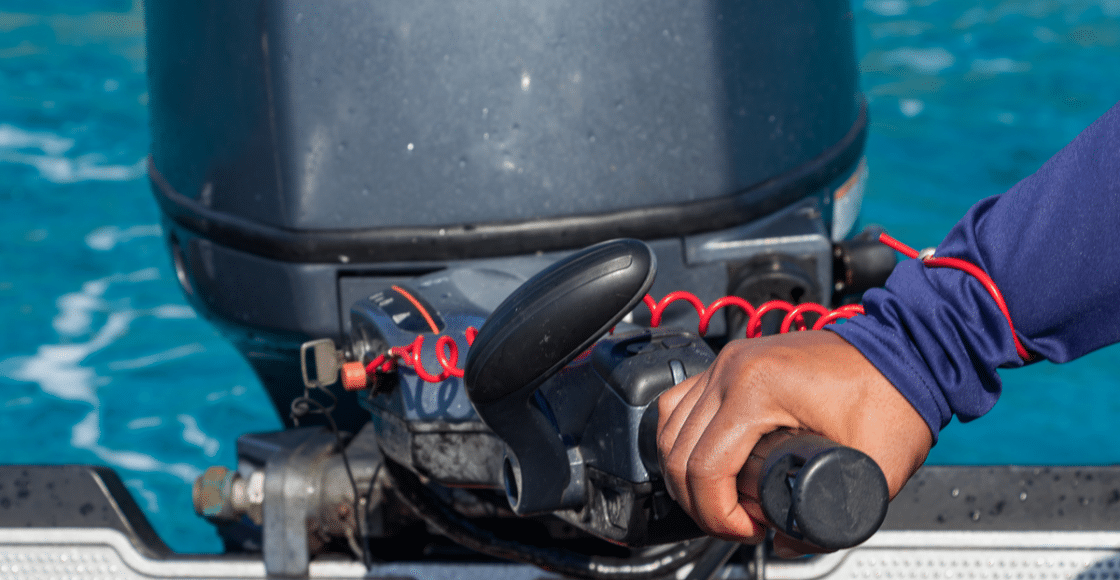
What is a Tiller on a Boat?

Table of Contents
A tiller is a lever that is attached to the rudder and is used to turn a boat. Tillers are used on power and sailboats, and a tiller and rudder combination is the simplest way to steer a boat.
Or, the steering system can be very complex, with multiple rudders and steering components that must be aligned to work correctly. These more complicated steering systems can be attached to a tiller or wheel. Even with multiple rudders, some boats use tillers, some don’t, and a select few offer both.
Using a tiller is backward from using a steering wheel and takes a bit of getting used to. The steering wheel is turned in the direction you want to go. However, you push a tiller the opposite of the direction you want to take.
Whether sailing an eight-foot pram or an eighty-foot schooner, your boat will have a rudder. The difference between the two is how they turn that rudder. The pram will use a tiller. The schooner, however, will likely use a very large wheel to set its course.
What is the difference between a rudder and a tiller?
The rudder of a boat protrudes into the water from where it hangs on the transom , or it can be placed under a boat. On the other hand, the tiller is the lever one moves from side to side, making the rudder turn.
A rudder is a blade in the vertical position, and it acts as a foil. Rudders can be constructed from wood, fiberglass, aluminum, or carbon fiber. As water passes over the rudder, its position determines the course of the boat. The tiller is a lever that you use to turn the rudder to steer a boat.
On many power and sailboats, the rudder(s) are out of sight beneath the hull . For this type of design, the tiller is fitted to a post. The post is attached to the rudder, and it is fitted under the boat.
When steering with a tiller, it is moved opposite of the direction you want to go. It doesn’t take long to grow accustomed to using a tiller, and you have already used one if you have ever used an outboard motor that is so equipped.
Where is a tiller on a boat?
It can be to the rear of the boat (astern), or it can be forward of that location and be fitted to a pipe that comes through the boat’s decking. Wherever it is located, its length and fittings (cleats, lines, and self-steering system attachments) are different from boat to boat.
What remains the same is that the tiller is what you use to steer the boat when so equipped. Tillers are often seen on boats less than 30 feet in length and predominately on sailboats. However, even some powerboats use a tiller for steering, and they are still used on many fishing and pleasure boats.
A tiller is chosen over a wheel for steering a boat because it is simpler and easier to repair if it breaks. In addition, the components of a steering system add weight to a boat and can be complicated.
A few newer style boats, such as sailing and ocean kayaks, use foot pedals attached to pulleys that lead to the rudder and move it side to side. This type of system works well on some boats but not on others.
Small outboard motors have a tiller.
Small outboard motors have a tiller attached to them to turn the motor and control the engine’s speed. These are usually seen on outboard motors that are 15 horsepower and below. However, they even offer tiller extensions for use on some boats.
Although they lack a rudder, the principle is the same, and the motor’s thrust takes its place. Outboard tillers house the throttle on many models, and others offer more features than a throttle alone.
A boat’s steering system
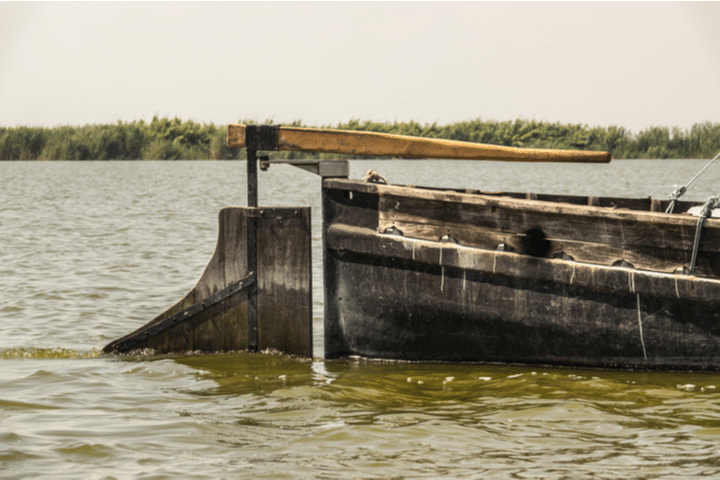
The most rudimentary steering system for a boat is a paddle. When wielded by someone with skill, paddling is very effective. Next up are oars for propulsion and steering, and again, a person skilled with oars can spin a boat within its own length.
On up the evolutionary trend of boat design came the long oar, strapped to the stern of large craft and used to steer. That was an unwieldy arrangement, and the designers forged on until they came upon rudder after decades of messing about with paddles as rudders.
The affixed rudder and tiller combination came on the scene around the 1st century. Voila, the tiller, was born and was the primary method of steering a boat until someone developed a pulley system attached to the rudder with rope or steel cable.
Even today, with modern wheel steering systems, some world sailors prefer the simplicity of a tiller, even on large sailing vessels. It is more straightforward, not as prone to problems, and is relatively easy to repair. Tillers can be made of wood, aluminum, carbon fiber, or almost any other stiff, durable material. You can fit a tiller with extensions, tiller pins, and attachments for self-steering systems.
What is a tiller pin used for?
Tiller pins are metal pins that allow one to detach the tiller from the head of the rudder very easily. A tiller pin also allows the tiller to hinge upward. This will enable you to store it out of the way when a boat is moored.
Other than sailboats, and some powerboats, tillers are used on narrowboats. A narrowboat is a canal boat that is used predominately in Europe. Most of them use rudders with which to steer, to which a tiller or tiller bar is attached.
The tiller pin on a narrowboat is often a decorative metal piece with a specific purpose. It performs the same task as it does on dinghies and creates a hinge point that allows the tiller to be bent back 180 degrees so that it is out of the way of the cockpit when moored.
What is a Norwegian tiller?
The Norwegian tiller is but another idea that facilitates steering a sailboat. Due to the design of a boat, tillers have been crafted to overcome fitment on double-ended sailboats and on boats whose rigging lies in the path of where a tiller generally resides.
Thus, the Norwegian tiller is placed at a right angle to the rudder instead of aligning with it. The tiller is then fitted with a stick with which you push or pull the tiller to steer.
Methods of steering a boat have evolved; however, some of the old ways of doing things have been proven to work well. For example, rudders and tillers may be more high-tech than 50 years ago, but they still serve the same purpose; they are used to steer a boat.
Learning the Ropes of Boating
Whether you’re a novice boater or have been around them for decades, boat designs are continually evolving, and the evolution makes them more costly. So let’s face it, boating is expensive, and the best way to learn if you like to sail, fish, or even go boating is to get on the water.
At Boatsetter, a local fleet of boats awaits your adventures. The fleet is comprised of sailboats, fishing boats, ski boats, yachts, and houseboats . They offer you endless opportunities to find what boating niche suits your fancy. So, no matter where you live, finding a boat to sail, or one with which to chase a prized bass, there’s likely a Boatsetter boat near you.

Boatsetter empowers people to explore with confidence by showing them a world of possibility on the water. Rent a boat, list your boat, or become a Boatsetter captain today.
Browse by experience

Explore articles

Captains for Clean Water: Protecting Aquatic Ecosystems | #MindYourWake Series
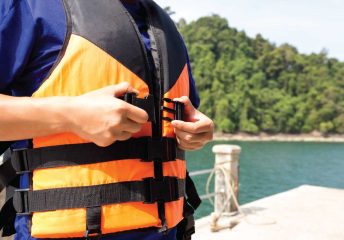
Life Jacket Types: Choosing a U.S. Coast Guard-Approved PFD

Water Activities in Dallas

Why Cape Coral Needs to be Your December Destination
Tiller for Sailboat: A Comprehensive Guide
by Emma Sullivan | Jul 21, 2023 | Sailboat Maintenance

==Short answer: Tiller for sailboat== A tiller is a lever used to steer a sailboat. It connects directly to the rudder, allowing the sailor to control the direction of the boat. The tiller is typically made of wood or metal and is positioned at the aft of the vessel for easy access and maneuverability.
Choosing the Right Tiller for Your Sailboat: A Comprehensive Guide
Introduction:
Sailing is an art that requires a combination of skill, intuition, and the right equipment. When it comes to controlling your sailboat, one crucial component that deserves your attention is the tiller. The tiller acts as the steering mechanism, allowing you to navigate through the waters smoothly and efficiently. However, choosing the right tiller for your sailboat can be a daunting task, given numerous options available in the market. But fear not! In this comprehensive guide, we will walk you through everything you need to know about selecting the perfect tiller for your beloved vessel.
Understanding Tiller Basics:
Before delving into different types of tillers available, let’s start by understanding some fundamental concepts regarding their design and functionality. The tiller serves as a lever that connects directly to a boat’s rudder or yoke. It provides sailors with precise control over their vessel’s direction by simply moving it left or right. Tillers are typically made from sturdy materials like wood, stainless steel, or carbon fiber for optimum durability while ensuring ease of use.
Different Types of Tiller Materials:
Wood: Tradition meets elegance with wooden tillers! Wood offers timeless beauty while providing excellent grip and sturdiness. Many sailors choose wooden tillers due to their aesthetic appeal and simplicity in maintenance. However, keep in mind that wooden tillers might require periodic coating with varnish or other protective solutions to withstand constant exposure to water.
Stainless Steel: If you’re seeking durability and corrosion resistance packed with modern aesthetics, stainless steel tillers should be on top of your list. Stainless steel allows for a sleek appearance while ensuring longevity even under harsh weather conditions. Moreover, its smooth surface reduces friction between hands and the tiller shaft, making maneuvering effortless.
Carbon Fiber: For those seeking cutting-edge technology coupled with lightweight strength, carbon fiber stands out as the ultimate choice. Carbon fiber tillers offer exceptional stiffness, reducing any unnecessary bending or flexing while sailing. With its high resistance to corrosion and impressive performance, carbon fiber tillers have become increasingly popular among avid sailors.
Choosing the Right Size:
When it comes to selecting the appropriate size for your tiller, it should fit comfortably in your hands without causing strain or discomfort during extended periods at sea. The length of a tiller is also crucial as it determines how far you need to reach from your seated position to effectively steer the vessel. Generally, tillers range from 3 to 6 feet in length, with longer options providing more leverage but potentially causing interference with cockpit space.
Considerations for Your Sailboat Type:
Different sailboat designs may require specific considerations when choosing a tiller:
– Monohulls: For monohull sailboats, it’s essential to consider factors such as rudder placement and cockpit configuration. Depending on whether you have an aft-mounted or transom-hung rudder, you may need a shorter or longer tiller respectively. – Catamarans: The wide beam characteristic of catamaran hulls demands careful consideration when selecting a tiller. The size and shape should allow for easy passage between hulls while maintaining optimal control over each rudder. – Dinghies: Dinghies often necessitate lightweight materials and compact designs for enhanced maneuverability in tight spaces. Here, carbon fiber or aluminum alloy tillers are excellent choices due to their strength-to-weight ratio.
Conclusion:
Choosing the right tiller for your sailboat can significantly impact your overall sailing experience. By considering various factors like material, size, boat type compatibility, and personal preferences – be they traditional elegance or cutting-edge technology – you can find the perfect match that complements both form and function aboard your vessel. So cast off those doubts and set course confidently with a reliable companion steering you towards new nautical adventures!
How to Use a Tiller for Your Sailboat: Step-by-Step Instructions for Novices
If you’re a novice sailboat enthusiast, the concept of using a tiller may initially seem daunting. However, fear not! We are here to guide you through the process step-by-step and help you become the sailor you’ve always dreamt of being. So grab your captain’s hat and let’s dive right in!
What is a tiller, you may ask? A tiller is essentially a lever attached to the rudder of your sailboat that allows you to control its direction. Think of it as the steering wheel of the sea, putting you in complete command.
Step 1: Get Acquainted with Your Tiller Before setting sail, it’s crucial to take some time getting familiar with your trusty tiller. Locate it near the stern (rear) of your boat – it’s usually a wooden stick or metal rod extending outward from the transom.
Step 2: Determine Your Leeward Side Now that you’ve established where your tiller lives, let’s explore which side of your boat is leeward. Picture yourself standing at the back-facing forward; leeward refers to the side opposite to where the wind comes from. Got it? Excellent!
Step 3: Position Yourself Correctly To successfully manipulate your tiller, stand or sit on whichever side aligns with the leeward location we discussed earlier. This helps maintain balance and ensures proper control over your vessel throughout each glorious voyage.
Step 4: Grasp Control With confidence brimming within you, grab onto that trusty tiller firmly but without exerting excessive force. Remember, finesse is key here – finesse like a skilled musician delicately playing their instrument.
Step 5: Feel It Out As soon as you’re at ease holding onto your tiller, close your eyes for just a moment (please don’t do this while sailing!). Take notice of how subtle movements can translate into significant adjustments in your sailboat’s heading. It’s like an eloquent dance between you, the tiller, and the sea.
Step 6: Turning Left or Right When it’s time to make a turn, prepare for an exhilarating experience! To go left, push the tiller away from yourself using your right hand. Conversely, to turn right, do precisely the opposite – pull the tiller towards you with your left hand. Pretty intuitive once you get the hang of it!
Step 7: Navigating Straight Ahead Occasionally, you may desire to continue sailing blissfully straight ahead without any fancy maneuvers. To do this, simply maintain a centered position with your hands on the tiller and ensure both hands apply equal pressure. This technique guarantees a steady course through tranquil waters.
Step 8: Advanced Tiller Techniques Once you’ve mastered these fundamentals, congratulations – you’re officially poised to explore more advanced tiller techniques! These can include tacking (changing direction while crossing wind), jibing (changing direction when wind comes from behind), and executing quick maneuvers that will impress even seasoned sailors.
There you have it – step-by-step instructions on how to use a tiller for your sailboat as a novice sailor. Remember, patience and practice are essential keys to becoming a maestro of manoeuvers. So go out there and embrace the freedom of the open sea with confidence in every swing of your trusted tiller. Bon voyage!
Frequently Asked Questions about Tiller Systems for Sailboats
Frequently Asked Questions about Tiller Systems for Sailboats: Demystifying the Steering Mechanism
Ah, the tiller – that humble yet critical component of any sailboat’s steering system. Whether you’re a seasoned sailor or just getting started, understanding how tiller systems work and their benefits can enhance your sailing experience. To shed light on this frequently misunderstood subject, we’ve compiled a list of questions often asked about tiller systems for sailboats.
1. What is a tiller system, and how does it work?
A tiller system is the method by which sailors control the direction of their boats. It consists of a long wooden or metal bar connected to the rudder at one end and operated by hand at the other end. When a sailor turns the tiller in either direction, it moves the rudder accordingly, causing the boat to change course.
2. Why are tillers used instead of traditional steering wheels?
Tillers have been used for centuries due to their simplicity and efficiency. Unlike steering wheels commonly seen on motorized vessels, tillers offer direct feedback and precise control over the boat’s movement with minimal mechanical components. They also provide an immersive experience by physically connecting sailors with their vessel.
3. What are some advantages of using a tiller system?
Tiller systems provide several notable advantages over alternative steering mechanisms:
a) Responsiveness: Tiller-operated boats respond rapidly to even slight adjustments in helm input. This responsiveness allows for quick maneuvering in tight spaces or adverse weather conditions.
b) Sensitivity: With a direct connection between hand and rudder, sailors can feel subtle changes in water conditions through the tiller’s vibrations before they visually manifest in boat movement.
c) Reliability: Due to their simple construction, tillers have minimal parts that could potentially fail or require maintenance compared to complex wheel steering mechanisms.
4. Do all sailboats use tillers?
While many smaller boats, such as dinghies and single-handed sailboats, primarily use tillers, larger vessels often feature wheel steering systems. The choice between tiller and wheel primarily depends on the size and design of the sailboat, as well as personal preference.
5. Can a tiller system be retrofitted onto a boat with a wheel?
Yes! While more involved than simply attaching a tiller to an existing rudder, it is possible to convert a boat from a wheel system to a tiller system. This process typically involves modifications to the rudder post and cockpit layout, making it advisable to consult with a knowledgeable marine professional for guidance.
6. Are there any downsides to using a tiller system?
Though rare, certain drawbacks exist within tiller systems:
a) Space limitation: Tiller systems require ample space in the cockpit for maneuvering since the helmsperson stands or sits near the stern rather than at the bow.
b) Physical effort: Steering larger boats with tillers can require more physical exertion compared to finger-tip-controlled wheel steering systems due to increased leverage required.
7. How can I improve my skills in operating a sailboat equipped with a tiller system?
Practice makes perfect! Spending time on the water honing your skills will enhance your ability to steer precisely and react effectively under various sailing conditions. Consider taking sailing courses or participating in regattas where experienced sailors can offer tips specific to tiller-operated vessels.
So there you have it – your burning questions about tiller systems for sailboats answered in one fell swoop! Understanding how this integral part of sailing works allows you to navigate not only your ship but also the vast ocean of knowledge surrounding these unique steering mechanisms.
Finding the Perfect Tiller Extension for Your Sailboat
Are you a seasoned sailor or a beginner taking your first steps into the world of sailing? Whichever category you fall into, one thing is for certain – having the right equipment is essential to make your experience on the water enjoyable and hassle-free. And when it comes to sailboats, finding the perfect tiller extension can make all the difference in how smoothly you handle your vessel.
A tiller extension is a fantastic tool that allows sailors to effectively control their boat by extending their reach. It acts as an extra arm, giving you better leverage and control over your sailboat’s rudder without having to strain your body or be confined to a single position. This means more comfort, less fatigue, and ultimately more enjoyment while sailing.
But with so many options available in the market today, finding the perfect tiller extension can seem like searching for a needle in a haystack. Don’t fret! We’ve put together this comprehensive guide to help you find that ideal extension tailored specifically to your needs.
Firstly, it’s important to consider the material of the tiller extension. While many extensions are made from aluminum or fiberglass, high-quality carbon fiber extensions have gained popularity due to their incredible strength-to-weight ratio. Carbon fiber provides excellent durability without weighing down your boat or compromising on performance.
Next up is length. Determining the right length for your tiller extension depends on various factors such as boat size, sailing conditions, and personal preference. As a general rule of thumb, shorter extensions are ideal for smaller boats or when sailing alone since they provide better maneuverability in tight spaces. On the other hand, longer extensions are advantageous when sailing with multiple crew members or on larger vessels where reaching across wider cockpits becomes necessary.
Grip style is another crucial aspect worth considering. The grip design should offer enough comfort and control for extended periods spent navigating through waves and changing winds. Look for ergonomic grips that are slip-resistant, allowing you to maintain a solid hold even when things get bumpy out on the water.
When it comes to features, there are a few innovative options that can greatly enhance your sailing experience. Some tiller extensions come with telescopic capabilities, enabling easy adjustment of length to suit various scenarios. Additionally, consider extensions with quick-release mechanisms that allow for swift detachment during emergencies or when docking your boat. These convenient features can be game-changers that make your time on the water more efficient and safe.
Lastly, price may be a determining factor in your decision-making process. While it’s always tempting to opt for budget-friendly options, remember that investing in a durable and reliable tiller extension is an investment in your comfort and safety while sailing. Spending a little extra now will ultimately save you from potential headaches down the line.
So, whether you’re an experienced sailor looking to upgrade or a newcomer searching for the perfect tiller extension for your sailboat, keeping these factors in mind will steer you towards making the right choice. Remember – finding the perfect tiller extension adds convenience and control to your sailing adventures, allowing you to navigate the waters with finesse and enjoyment. Happy sailing!
Upgrading Your Sailboat’s Tiller: Tips and Tricks
Ahoy, fellow sailors! If you’re looking to take your sailing experience to the next level, upgrading your sailboat’s tiller is an excellent place to start. Not only can a new tiller enhance the performance of your vessel, but it can also add a touch of style and sophistication to your sailing adventures. So, grab a drink, sit back, and let’s dive into some professional yet witty tips and tricks for upgrading that trusty tiller of yours.
First things first – why should you even consider upgrading your sailboat’s tiller? Well, my friends, the tiller is arguably one of the most critical components when it comes to steering your boat. A sturdy, well-designed tiller allows for better control and maneuverability on the water. Additionally, a new tiller can provide increased comfort during long hours at sea by minimizing hand fatigue and providing better grip.
When choosing a new tiller for your sailboat, you’ll want to take a few factors into consideration. The material of the tiller plays a crucial role in its durability and overall performance. While traditional wooden tillers exude charm and elegance, they tend to require more maintenance. On the other hand, carbon fiber or fiberglass composite options offer superior strength while being lightweight and low-maintenance.
Now comes the fun part – selecting a visually appealing tiller that suits both your aesthetic preferences and practical needs. Consider opting for a sleek design with ergonomic features that fit comfortably in your hand. Some modern tilers even come equipped with innovative features such as built-in compasses or smartphone holders – perfect for those who like their gadgets while navigating the high seas!
When it comes to installation, it’s essential to ensure that the new tiller fits properly into your sailboat’s helm assembly. In most cases, this involves measuring carefully and potentially making adjustments or modifications if necessary. If you’re not confident in your DIY skills, don’t hesitate to seek the help of a professional. After all, a proper installation guarantees safe and efficient sailing.
Now, let’s address the inevitable question of budget. Upgrading your sailboat’s tiller can range from affordable to extravagant – it all depends on your personal preferences and financial capabilities as a savvy sailor. Keep an eye out for sales or discounts in boating stores, browse online marketplaces, or consider purchasing pre-owned tillers that are still in good condition. Remember: it’s not necessary to break the bank – upgrading your tiller can still be within reach even for those on a tighter budget.
Lastly, don’t forget about maintenance! To keep your newly upgraded tiller in ship-shape condition, regularly clean it with mild soap and water. Apply a protective coating if needed, especially for wooden tillers that are prone to weathering. Additionally, inspect and tighten all connections periodically to ensure everything remains secure during your sailing adventures.
So there you have it – a detailed professional and clever guide on upgrading your sailboat’s tiller. With these tips and tricks under your belt, you’ll be well on your way to enjoying enhanced control and style while navigating the open waters. Happy sailing!
Maintenance and Care of Your Sailboat’s Tiller: Expert Advice
Title: Mastering the Art of Tiller Maintenance and Care: Insights from the Sailing Pioneers
Introduction: Setting sail on a grand adventure upon your beloved sailboat wouldn’t be possible without the often-underappreciated tiller. This unsung hero connects you to the magic of wind and water, enabling you to navigate the vast sea with grace and precision. However, like any crucial component, proper maintenance and care are key to ensuring your tiller remains shipshape. In this blog post, we unveil expert advice on how to keep your sailboat’s tiller in pristine condition, enhancing both its longevity and your sailing experience.
1. Understanding Your Tiller’s Anatomy: Before delving into maintenance techniques, let’s explore the intricate design of your sailboat’s tiller – an ingenious marriage between functionality and beauty. Crafted from durable materials such as hardwood or fiberglass, these ergonomic extensions offer comfort while holding sway over your vessel’s direction. Familiarizing yourself with its composition is vital for future care.
2. Cleansing Rituals for Longevity: Imagine a tiller encrusted with salt residue or marred by sun-induced cracks; such experiences can certainly dampen any sailing excursion. To maintain its pristine appearance and extend its lifespan significantly, adopting regular cleaning rituals is paramount. Begin by rinsing off saltwater after every use using gentle freshwater streams to eradicate corrosive salts delicately trapped within crevices.
3. Condition Like a Pro: Just as our skin requires nourishment to remain supple, so too does your tiller require conditioning agents to withstand constant exposure to harsh elements. Opt for high-quality marine-grade oils that penetrate deep into the wood fibers or fiberglass surface – giving moisture-repellent protection against damaging UV rays and preventing wood rot in humid conditions.
4. The Unseen Enemy: Moisture Protection Strategies: Moisture is indeed the eternal nemesis of wooden components. Combat its destructive effects by introducing moisture barrier techniques. Applying a sealant or marine-grade varnish to the tiller’s surface provides an invisible shield against water penetration, preserving its structural integrity in the long run.
5. Love Your Tiller: Regular Inspections: Like any love affair, regular inspections are essential to maintaining a healthy and thriving relationship with your tiller. Pay close attention to signs of wear and tear, including cracks, splintering, or loose fittings. Promptly addressing these issues can prevent minor problems from escalating into major setbacks during your sailing sojourns.
6. Storage Savvy: When it’s time to bid adieu to the salty embrace of the sea, proper storage practices become paramount. Shield your tiller from excessive exposure to sunlight, which causes fading and brittleness over time – potentially resulting in catastrophic failures at crucial moments.
7. Craft Your Personalized Tiller Care Guide: Every sailboat is unique and requires tailored care schemes; similarly, your trusty tiller deserves an individualized maintenance plan crafted by you! Document a checklist encompassing regular cleaning rituals, conditioning treatments schedule, and inspection reminders – reassuring that you never miss a beat when tending to this unsung hero.
In Conclusion: By incorporating these expert tips into your routine sailboat maintenance regimen, you’ll ensure your tiller remains at the peak of its performance throughout endless nautical adventures. Remember, a well-maintained and cared-for tiller not only enhances safety but also keeps you connected to the soul-stirring wonders of sailing like nothing else can! So go forth confidently with this newfound wisdom and seize every glorious moment on the open seas!
Recent Posts

- Sailboat Gear and Equipment
- Sailboat Lifestyle
- Sailboat Maintenance
- Sailboat Racing
- Sailboat Tips and Tricks
- Sailboat Types
- Sailing Adventures
- Sailing Destinations
- Sailing Safety
- Sailing Techniques
- AROUND THE SAILING WORLD
- BOAT OF THE YEAR
- Email Newsletters
- Best Marine Electronics & Technology
- America’s Cup
- St. Petersburg
- Caribbean Championship
- Boating Safety

Sailboat Racing Tips: Tiller Extension Technique
- By Mike Ingham
- May 31, 2022
- More: Sailing How To
- More How To

The Wisdom of Augie Diaz

Why S-Turns, Roll Jibes and Roll Tacks Are Fast

The Path to Consistent Boatspeed

Headsail Trim Tips For Floating Leads

Brauer Sails into Hearts, Minds and History

Anticipation and Temptation

America’s Offshore Couple

Jobson All-Star Juniors 2024: The Fast Generation

- Digital Edition
- Customer Service
- Privacy Policy
- Cruising World
- Sailing World
- Salt Water Sportsman
- Sport Fishing
- Wakeboarding

7 Best Sailboat Autopilot Systems

Last Updated by
Daniel Wade
June 15, 2022
Essential in increasing efficiency, safety, and convenience, marine autopilots are a sailor's best friend when out there on the water. A properly operating sailboat autopilot will keep your sailboat on a selected course even in strong currents and winds and that why you need to go for the best sailboat autopilot.
Steering a sailboat is always fun. And even though many sailors are so good at it, some circumstances can make steering a boat on a straight line or the right course almost impossible. The tides, winds, and the complex hull-bottom designs can throw your sailboat off route and the adjustments that you have to make to return to course can be your voyage killers. Even if you have a crew that regularly sails with you, having an autopilot can help you stay on course and that's exactly why you need the best sailboat autopilot.
In the simplest term possible, an autopilot is an extra pair of hands that can help you in steering your sailboat on the right course. It is a self-steering device for powerboats or sailboats and even the most basic autopilot can help in holding your vessel on a pre-set compass course. Some advanced autopilots can even gather data from your boat and determine whether or not the boat is capable of handling the task in hand.
So whether you have a mechanically-steered boat or a tiller-steered sailboat, an autopilot is of great importance for both you and your boat. And it doesn't matter whether you want to explore your nearest lake for a day or want to sail to the Caribbean on your sailboat, it will make your job a lot easier, efficient, and safer. This is why we've put together this article to help you find the best sailboat autopilot. Read on and find which is best for you and your sailboat.
Table of contents
How to Choose the Best Sailboat Autopilot for Your Vessel
When it comes to choosing the best sailboat autopilot for your vessel, the easiest thing to do would be to go for an autopilot that can steer your sailboat in calm seas. However, this is not advisable since you want an autopilot that works perfectly under very demanding sea conditions. With that in mind, here are the most important things to consider when looking at the best sailboat autopilot for you.
Speed of Helm Adjustment
The best way to measure the speed on an autopilot that's appropriate for your boat is by looking at the number of degrees per second of helm correction. As such a 40-feet boat requires 10 degrees per second, a 25-feet boat requires 15 degrees per second, and a 70-feet boat requires 5 degrees per second.
An above-deck or below-deck Autopilot
Do you want an autopilot that's designed to be used above the deck or below the deck? Well, the most important thing is to choose an autopilot that matches the displacement of your boat. More importantly, above-deck autopilots are ideal if you have a smaller boat while below-deck autopilot is ideal if you have a larger boat.
The Steering System
What type of steering system does your boat have? It's important to understand whether your boat has rotary drives, linear drive, or hydraulic drives.
Control Interfaces
You should choose what's perfect for you as far as the control interface is concerned because this is one of the most crucial parts of an autopilot. The best features to consider include ease of use, waterproof, intuitive display, backlit options, and compatibility with SimNet, SeaTalk, and NMEA 2000.
7 Best Sailboat Autopilots
Here are the 7 best sailboat autopilots.
Raymarine ST1000 Plus Tiller Pilot
(Best for Tiller-steered Sailboats)
The Raymarine ST100 Plus Tiller Pilot is a classic tiller pilot that's one of the best accessories for your sailboat and your everyday sailing escapades. It's designed in such a way that it can accept NMEA data while still offering accurate navigation thanks to its incredibly intelligent software.
This autopilot is designed with a backlit LCD to help you see your navigational data, locked course, and other important information that can make your sailing safer and much better. The fact that the backlit LCD works perfectly in low-light conditions is an added plus.
That's not all; the ST1000 comes with an AutoTack feature that works like an extra hand when you're engaged in other responsibilities. For example, it can tack the sailboat for you when you adjust the sails. Better still, this autopilot is fully-fitted with everything that you need to install it on your sailboat and use it.
- It's easy to use thanks to the simple six-button keypad
- It's perfect when sailing in the calm sea as well as in stormy conditions
- It is waterproof so you don't have to worry about it getting damaged
- Its intelligent software minimizes battery usage thereby prolonging its battery life
- Perfect for tiller-steered sailboats
- The 2-year warranty could be improved
- It's a bit heavier
Garmin Ghc 20 Marine Autopilot Helm Control
(Best for Night Sailing)
If you're planning to go on a voyage, chances are you'll find yourself sailing overnight. With that in mind, you should go for an autopilot that works perfectly both during the day and at night. The Garmin Ghc 20 Marine Autopilot Helm Control is your best sailboat autopilot for these types of adventure.
This amazing autopilot is designed with a 4-inch display that can improve your nighttime readability. This display is glass-bonded and comes with an anti-glare lens that is essential in preventing fog and glare in sunny conditions. This is crucial in helping you maintain control in all conditions, both during the day and at night.
This autopilot also provides a 170-degree viewing angle. This is essential in viewing the display at almost any angle. So whether you're adjusting the sails up on the deck or grabbing an extra sheet below the deck, you can be able to look at the display and see what's going on. So whether a sailing vessel or a powerboat, this autopilot is easy to use thanks to its five-button control.
- The five-button control makes it easy to use
- Comes with a bright 4-inch display
- The display works in all conditions thanks to its glass-bonded, anti-glare lens
- The display offers optimal view both during the day and at night
- It's compatible with other Garmin products
- Only good for sailboat under 40 feet in length
- The battery life should be improved
Simrad TP10 Tillerpilot
(Best for 32-feet or less Sailboat)
For many lone sailors, going with a sailboat that measures 32-feet or less in length is always ideal. Under such scenarios, it's always best to go with a sailboat autopilot that's perfect for such types of boats, and the Simrad TP10 Tillerpilot can be a superb option for you. This autopilot is so perfect as it brings to the table a combination of advanced technological software and simplicity.
Its five-button display makes it user-friendly, easy to use, and perfect in controlling your sailboat accordingly. This autopilot has a low-power draw, which means that your battery will last longer even when used for prolonged periods. This is an excellent autopilot that's designed with the sailor in mind as it goes about its business quietly so that you can enjoy your sailing adventures without noise and interruption from a humming autopilot.
- One of the quietest sailboat autopilots
- The battery life is excellent
- It's designed with one of the most advanced software
- It's waterproof to protect it from spray and elements
- It offers precision steering and reading in all types of weather conditions
- It's easy to use and control
- Not ideal for big boats
Raymarine M81131 12 Volt Type 2 Autopilot Linear Drive
(Best for Seasonal Cruising)
For those of us who love cruising during winter when other sailors are drinking hot coffee from the comfort of their abodes, the Raymarine M81131 is the right sailboat autopilot for you. Well, this autopilot can be an ideal option if your sailboat is large enough to have a full motor system.
This autopilot is one of the most powerful in the marine industry and has an incredible electromagnetic fail-safe clutch. This autopilot is also compatible with other devices such as NMEA 2000 ABD SeaTalk navigation data. In terms of precision navigation, this autopilot will never disappoint you in any weather condition.
So whether you're looking to go ice-fishing or sailing the oceans during winter, this is your go-to autopilot.
- Offers optimal sailing experience and navigation precision
- It's very quiet
- It offers high performance with minimal battery usage
- It's great for adverse winter conditions
- It's expensive
Furuno Navpilot 711C Autopilot System
(Best for Accuracy)
If you're looking for the best sailboat autopilot that will take your navigation to the next level in terms of accuracy, look no further than the Furuno Navpilot 711C. This is an autopilot that enhances your boat's precision as far as staying on course is concerned. This is because the autopilot is designed with a self-learning software program that offers step by step calculations of your navigation and course.
This autopilot also offers real-time dynamic adjustments so that you can steer your sailboat more accurately. Thanks to this self-learning algorithm also offers great power application that significantly reduces the manual helm effort when maneuvering various situations. Its colored graphic display is of great benefit as you can easily read the information even in low-light conditions. So it doesn't matter whether you're sailing at night or during the day, this autopilot will serve you right in any condition.
- It's great for power and fuel efficiency
- The display is intuitive
- It's easy to set up and use
- Its power assist is essential in reducing steering system complexity
- Great for both outboard and inboard motors
- Quite expensive
Si-Tex SP120 Autopilot with Virtual Feedback
(The Most Affordable Autopilot)
If you're on a budget and looking for one of the most affordable yet reliable sailboat autopilots, look no further than the Si-Tex SP120 Autopilot. This is a perfect high-performance sailboat autopilot that can be great for small to medium-sized powerboats and sailboats.
One of the most important features that this autopilot brings to the table is the ability to offer virtual feedback. This is great in eliminating the manual rudder feedback and thereby enhances your sailboat's performance. Its splash-proof 4.3-inch LCD offers one of the best transflective displays in the marine industry. The 4-button operation makes it a lot easier to use and provides the information you need to steer your sailboat safely and perfectly.
This autopilot can be great for you if you have a small or medium-sized sailboat thanks to its ease of use. The fact that it's one of the most affordable sailboat autopilots makes it highly popular with sailors who are on a budget.
- It's simple to install and use
- The virtual feedback is great
- The display is one of the best in the game
- It's quite affordable
- It's not ideal for big boats
Garmin Reactor 40 Kicker Autopilot
(Best for Outboard Motor Boats)
If you have a motorboat that has a single-engine outboard, The Garmin Reactor 40 Kicker Autopilot can be an ideal option. This is a great autopilot that mitigates heading error and unnecessary rudder movement while offering more flexible mounting, which is essential in offering a more comfortable sailing even in the roughest of weather conditions.
This autopilot can be easily fine-tuned thanks to its throttle settings with a touch of a button. Of course, this can be useful especially when the seas are rough and you're trying to remain on course. This autopilot is also waterproof to ensure that it doesn't get damaged with spray or other elements.
With this autopilot, you're guaranteed to enjoy an awesome sailing trip even when going against the wind or when sailing in rough conditions.
- Easy to install and use
- It's waterproof
- It's beautifully designed
- It comes with a floating handheld remote control
- It's great for maintaining heading hold and route.
- It's only ideal for motorboats with up to 20 horsepower
- It's relatively expensive
As you can see, there are plenty of options when it comes to choosing an ideal sailboat autopilot for you. The best thing about the above-described sailboat autopilots is that they're among the best and you can find one that perfectly suits your unique needs and boats. Of course, most of them are quite expensive but they will advance the way you sail and make your sailing adventures even more enjoyable. We hope that you'll find the perfect sailboat autopilot for you.
Until next time, happy sailing!
Related Articles
I've personally had thousands of questions about sailing and sailboats over the years. As I learn and experience sailing, and the community, I share the answers that work and make sense to me, here on Life of Sailing.
by this author
Sailboat Upgrades

Most Recent

What Does "Sailing By The Lee" Mean?
October 3, 2023

The Best Sailing Schools And Programs: Reviews & Ratings
September 26, 2023
Important Legal Info
Lifeofsailing.com is a participant in the Amazon Services LLC Associates Program, an affiliate advertising program designed to provide a means for sites to earn advertising fees by advertising and linking to Amazon. This site also participates in other affiliate programs and is compensated for referring traffic and business to these companies.
Similar Posts

How To Choose The Right Sailing Instructor
August 16, 2023

Cost To Sail Around The World
May 16, 2023

Small Sailboat Sizes: A Complete Guide
October 30, 2022
Popular Posts

Best Liveaboard Catamaran Sailboats
December 28, 2023

Can a Novice Sail Around the World?
Elizabeth O'Malley

4 Best Electric Outboard Motors

How Long Did It Take The Vikings To Sail To England?


10 Best Sailboat Brands (And Why)
December 20, 2023

7 Best Places To Liveaboard A Sailboat
Get the best sailing content.
Top Rated Posts
Lifeofsailing.com is a participant in the Amazon Services LLC Associates Program, an affiliate advertising program designed to provide a means for sites to earn advertising fees by advertising and linking to Amazon. This site also participates in other affiliate programs and is compensated for referring traffic and business to these companies. (866) 342-SAIL
© 2024 Life of Sailing Email: [email protected] Address: 11816 Inwood Rd #3024 Dallas, TX 75244 Disclaimer Privacy Policy
Sailboat Parts Explained: Illustrated Guide (with Diagrams)
When you first get into sailing, there are a lot of sailboat parts to learn. Scouting for a good guide to all the parts, I couldn't find any, so I wrote one myself.
Below, I'll go over each different sailboat part. And I mean each and every one of them. I'll walk you through them one by one, and explain each part's function. I've also made sure to add good illustrations and clear diagrams.
This article is a great reference for beginners and experienced sailors alike. It's a great starting point, but also a great reference manual. Let's kick off with a quick general overview of the different sailboat parts.
General Overview
The different segments
You can divide up a sailboat in four general segments. These segments are arbitrary (I made them up) but it will help us to understand the parts more quickly. Some are super straightforward and some have a bit more ninja names.
Something like that. You can see the different segments highlighted in this diagram below:

The hull is what most people would consider 'the boat'. It's the part that provides buoyancy and carries everything else: sails, masts, rigging, and so on. Without the hull, there would be no boat. The hull can be divided into different parts: deck, keel, cabin, waterline, bilge, bow, stern, rudder, and many more.
I'll show you those specific parts later on. First, let's move on to the mast.

Sailboats Explained
The mast is the long, standing pole holding the sails. It is typically placed just off-center of a sailboat (a little bit to the front) and gives the sailboat its characteristic shape. The mast is crucial for any sailboat: without a mast, any sailboat would become just a regular boat.
I think this segment speaks mostly for itself. Most modern sailboats you see will have two sails up, but they can carry a variety of other specialty sails. And there are all kinds of sail plans out there, which determine the amount and shape of sails that are used.
The Rigging
This is probably the most complex category of all of them.
Rigging is the means with which the sails are attached to the mast. The rigging consists of all kinds of lines, cables, spars, and hardware. It's the segment with the most different parts.
The most important parts
If you learn anything from this article, here are the most important parts of any sailboat. You will find all of these parts in some shape or form on almost any sailboat.

Okay, we now have a good starting point and a good basic understanding of the different sailboat parts. It's time for the good stuff. We're going to dive into each segment in detail.
Below, I'll go over them one by one, pointing out its different parts on a diagram, listing them with a brief explanation, and showing you examples as well.
After reading this article, you'll recognize every single sailboat part and know them by name. And if you forget one, you're free to look it up in this guide.

On this page:
The hull is the heart of the boat. It's what carries everything: the mast, the sails, the rigging, the passengers. The hull is what provides the sailboat with its buoyancy, allowing it to stay afloat.
Sailboats mostly use displacement hulls, which is a shape that displaces water when moving through it. They are generally very round and use buoyancy to support its own weight. These two characteristics make sure it is a smooth ride.
There are different hull shapes that work and handle differently. If you want to learn more about them, here's the Illustrated Guide to Boat Hull Types (with 11 Examples ). But for now, all we need to know is that the hull is the rounded, floating part of any sailboat.
Instead of simply calling the different sides of a hull front, back, left and right , we use different names in sailing. Let's take a look at them.

The bow is the front part of the hull. It's simply the nautical word for 'front'. It's the pointy bit that cuts through the water. The shape of the bow determines partially how the boat handles.
The stern is the back part of the hull. It's simply the nautical word for 'back'. The shape of the stern partially determines the stability and speed of the boat. With motorboats, the stern lies deep inside the water, and the hull is flatter aft. Aft also means back. This allows it to plane, increasing the hull speed. For sailboats, stability is much more important, so the hull is rounded throughout, increasing its buoyancy and hydrodynamic properties.
The transom is the backplate of the boat's hull. It's the most aft (rear) part of the boat.
Port is the left side of a sailboat.
Starboard is the right side of a sailboat
The bilges are the part where the bottom and the sides of the hull meet. On sailboats, these are typically very round, which helps with hydrodynamics. On powerboats, they tend to have an angle.
The waterline is the point where the boat's hull meets the water. Generally, boat owners paint the waterline and use antifouling paint below it, to protect it from marine growth.
The deck is the top part of the boat's hull. In a way, it's the cap of the boat, and it holds the deck hardware and rigging.
Displacement hulls are very round and smooth, which makes them very efficient and comfortable. But it also makes them very easy to capsize: think of a canoe, for example.
The keel is a large fin that offsets the tendency to capsize by providing counterbalance. Typically, the keel carries ballast in the tip, creating a counterweight to the wind's force on the sails.
The rudder is the horizontal plate at the back of the boat that is used to steer by setting a course and maintaining it. It is connected to the helm or tiller.
Tiller or Helm
- The helm is simply the nautical term for the wheel.
- The tiller is simply the nautical term for the steering stick.
The tiller or helm is attached to the rudder and is used to steer the boat. Most smaller sailboats (below 30') have a tiller, most larger sailboats use a helm. Large ocean-going vessels tend to have two helms.
The cockpit is the recessed part in the deck where the helmsman sits or stands. It tends to have some benches. It houses the outside navigation and systems interfaces, like the compass, chartplotter, and so on. It also houses the mainsheet traveler and winches for the jib. Most boats are set up so that the entire vessel can be operated from the cockpit (hence the name). More on those different parts later.
Most larger boats have some sort of roofed part, which is called the cabin. The cabin is used as a shelter, and on cruising sailboats you'll find the galley for cooking, a bed, bath room, and so on.
The mast is the pole on a sailboat that holds the sails. Sailboats can have one or multiple masts, depending on the mast configuration. Most sailboats have only one or two masts. Three masts or more is less common.
The boom is the horizontal pole on the mast, that holds the mainsail in place.
The sails seem simple, but actually consist of many moving parts. The parts I list below work for most modern sailboats - I mean 90% of them. However, there are all sorts of specialty sails that are not included here, to keep things concise.

The mainsail is the largest sail on the largest mast. Most sailboats use a sloop rigging (just one mast with one bermuda mainsail). In that case, the main is easy to recognize. With other rig types, it gets more difficult, since there can be multiple tall masts and large sails.
If you want to take a look at the different sail plans and rig types that are out there, I suggest reading my previous guide on how to recognize any sailboat here (opens in new tab).
Sail sides:
- Leech - Leech is the name for the back side of the sail, running from the top to the bottom.
- Luff - Luff is the name for the front side of the sail, running from the top to the bottom.
- Foot - Foot is the name for the lower side of the sail, where it meets the boom.
Sail corners:
- Clew - The clew is the lower aft (back) corner of the mainsail, where the leech is connected to the foot. The clew is attached to the boom.
- Tack - The tack is the lower front corner of the mainsail
- Head - The head is the top corner of the mainsail
Battens are horizontal sail reinforcers that flatten and stiffen the sail.
Telltales are small strings that show you whether your sail trim is correct. You'll find telltales on both your jib and mainsail.
The jib is the standard sized headsail on a Bermuda Sloop rig (which is the sail plan most modern sailboats use).
As I mentioned: there are all kinds, types, and shapes of sails. For an overview of the most common sail types, check out my Guide on Sail Types here (with photos).
The rigging is what is used to attach your sails and mast to your boat. Rigging, in other words, mostly consists of all kinds of lines. Lines are just another word for ropes. Come to think of it, sailors really find all kinds of ways to complicate the word rope ...
Two types of rigging
There are two types of rigging: running and standing rigging. The difference between the two is very simple.
- The running rigging is the rigging on a sailboat that's used to operate the sails. For example, the halyard, which is used to lower and heave the mainsail.
- The standing rigging is the rigging that is used to support the mast and sail plan.
Standing Rigging

Here are the different parts that belong to the standing rigging:
- Forestay or Headstay - Line or cable that supports the mast and is attached to the bow of the boat. This is often a steel cable.
- Backstay - Line or cable that supports the mast and is attached to the stern of the boat. This is often a steel cable.
- Sidestay or Shroud - Line or cable that supports the mast from the sides of the boat. Most sailboats use at least two sidestays (one on each side).
- Spreader - The sidestays are spaced to steer clear from the mast using spreaders.
Running Rigging: different words for rope
Ropes play a big part in sailing, and especially in control over the sails. In sailboat jargon, we call ropes 'lines'. But there are some lines with a specific function that have a different name. I think this makes it easier to communicate with your crew: you don't have to define which line you mean. Instead, you simply shout 'mainsheet!'. Yeah, that works.
Running rigging consists of the lines, sheets, and hardware that are used to control, raise, lower, shape and manipulate the sails on a sailboat. Rigging varies for different rig types, but since most sailboats are use a sloop rig, nearly all sailboats use the following running rigging:

- Halyards -'Halyard' is simply the nautical name for lines or ropes that are used to raise and lower the mainsail. The halyard is attached to the top of the mainsail sheet, or the gaffer, which is a top spar that attaches to the mainsail. You'll find halyards on both the mainsail and jib.
- Sheets - 'Sheet' is simply the nautical term for lines or ropes that are used to set the angle of the sail.
- Mainsheet - The line, or sheet, that is used to set the angle of the mainsail. The mainsheet is attached to the Mainsheet traveler. More on that under hardware.
- Jib Sheet - The jib mostly comes with two sheets: one on each side of the mast. This prevents you from having to loosen your sheet, throwing it around the other side of the mast, and tightening it. The jib sheets are often controlled using winches (more on that under hardware).
- Cleats are small on-deck hooks that can be used to tie down sheets and lines after trimming them.
- Reefing lines - Lines that run through the mainsail, used to put a reef in the main.
- The Boom Topping Lift is a line that is attached to the aft (back) end of the boom and runs to the top of the mast. It supports the boom whenever you take down the mainsail.
- The Boom Vang is a line that places downward tension on the boom.
There are some more tensioning lines, but I'll leave them for now. I could probably do an entire guide on the different sheets on a sailboat. Who knows, perhaps I'll write it.
This is a new segment, that I didn't mention before. It's a bit of an odd duck, so I threw all sorts of stuff into this category. But they are just as important as all the other parts. Your hardware consists of cleats, winches, traveler and so on. If you don't know what all of this means, no worries: neither did I. Below, you'll find a complete overview of the different parts.
Deck Hardware

Just a brief mention of the different deck hardware parts:
- Pulpits are fenced platforms on the sailboat's stern and bow, which is why they are called the bow pulpit and stern pulpit here. They typically have a solid steel framing for safety.
- Stanchons are the standing poles supporting the lifeline , which combined for a sort of fencing around the sailboat's deck. On most sailboats, steel and steel cables are used for the stanchons and lifelines.
Mainsheet Traveler
The mainsheet traveler is a rail in the cockpit that is used to control the mainsheet. It helps to lock the mainsheet in place, fixing the mainsails angle to the wind.

If you're interested in learning more about how to use the mainsheet traveler, Matej has written a great list of tips for using your mainsheet traveler the right way . It's a good starting point for beginners.
Winches are mechanical or electronic spools that are used to easily trim lines and sheets. Most sailboats use winches to control the jib sheets. Modern large sailing yachts use electronic winches for nearly all lines. This makes it incredibly easy to trim your lines.

You'll find the compass typically in the cockpit. It's the most old-skool navigation tool out there, but I'm convinced it's also one of the most reliable. In any way, it definitely is the most solid backup navigator you can get for the money.

Want to learn how to use a compass quickly and reliably? It's easy. Just read my step-by-step beginner guide on How To Use a Compass (opens in new tab .
Chartplotter
Most sailboats nowadays use, besides a compass and a map, a chartplotter. Chartplotters are GPS devices that show a map and a course. It's very similar to your normal car navigation.

Outboard motor
Most sailboats have some sort of motor to help out when there's just the slightest breeze. These engines aren't very big or powerful, and most sailboats up to 32' use an outboard motor. You'll find these at the back of the boat.

Most sailboats carry 1 - 3 anchors: one bow anchor (the main one) and two stern anchors. The last two are optional and are mostly used by bluewater cruisers.

I hope this was helpful, and that you've gained a good understanding of the different parts involved in sailing. I wanted to write a good walk-through instead of overwhelming you with lists and lists of nautical terms. I hope I've succeeded. If so, I appreciate any comments and tips below.
I've tried to be as comprehensive as possible, without getting into the real nitty gritty. That would make for a gigantic article. However, if you feel I've left something out that really should be in here, please let me know in the comments below, so I can update the article.
I own a small 20 foot yacht called a Red witch made locally back in the 70s here in Western Australia i found your article great and enjoyed reading it i know it will be a great help for me in my future leaning to sail regards John.
David Gardner
İ think this is a good explanation of the difference between a ”rope” and a ”line”:
Rope is unemployed cordage. In other words, when it is in a coil and has not been assigned a job, it is just a rope.
On the other hand, when you prepare a rope for a specific task, it becomes employed and is a line. The line is labeled by the job it performs; for example, anchor line, dock line, fender line, etc.
Hey Mr. Buckles
I am taking on new crew to race with me on my Flying Scot (19ft dingy). I find your Sailboat Parts Explained to be clear and concise. I believe it will help my new crew learn the language that we use on the boat quickly without being overwhelmed.
PS: my grandparents were from Friesland and emigrated to America.
Thank you Shawn for the well written, clear and easy to digest introductory article. Just after reading this first article I feel excited and ready to set sails and go!! LOL!! Cheers! Daniel.
steve Balog
well done, chap
Great intro. However, the overview diagram misidentifies the cockpit location. The cockpit is located aft of the helm. Your diagram points to a location to the fore of the helm.
William Thompson-Ambrose
An excellent introduction to the basic anatomy and function of the sailboat. Anyone who wants to start sailing should consider the above article before stepping aboard! Thank-you
James Huskisson
Thanks for you efforts mate. We’ve all got to start somewhere. Thanks for sharing. Hoping to my first yacht. 25ft Holland. Would love to cross the Bass Strait one day to Tasmania. 👌 Cheers mate
Alan Alexander Percy
thankyou ijust aquired my first sailboat at 66yrs of age its down at pelican point a beautifull place in virginia usa my sailboat is a redwing 30 if you are ever in the area i wouldnt mind your guidance and superior knowledge of how to sail but iam sure your fantastic article will help my sailboat is wings 30 ft
Thanks for quick refresher course. Having sailed in California for 20+ years I now live in Spain where I have to take a spanish exam for a sailboat license. Problem is, it’s only in spanish. So a lot to learn for an old guy like me.
Very comprehensive, thank you
Your article really brought all the pieces together for me today. I have been adventuring my first sailing voyage for 2 months from the Carolinas and am now in Eleuthera waiting on weather to make the Exumas!!! Great job and thanks
Helen Ballard
I’ve at last found something of an adventure to have in sailing, so I’m starting at the basics, I have done a little sailing but need more despite being over 60 life in the old dog etc, thanks for your information 😊
Barbara Scott
I don’t have a sailboat, neither do l plan to literally take to the waters. But for mental exercise, l have decided to take to sailing in my Bermuda sloop, learning what it takes to become a good sailor and run a tight ship, even if it’s just imaginary. Thank you for helping me on my journey to countless adventures and misadventures, just to keep it out of the doldrums! (I’m a 69 year old African American female who have rediscovered why l enjoyed reading The Adventures of Robert Louis Stevenson as well as his captivating description of sea, wind, sailboat,and sailor).
Great article and very good information source for a beginner like me. But I didn’t find out what I had hoped to, which is, what are all those noisy bits of kit on top of the mast? I know the one with the arrow is a weather vane, but the rest? Many thanks, Jay.
Louis Cohen
The main halyard is attached to the head of the mainsail, not the to the mainsheet. In the USA, we say gaff, not gaffer. The gaff often has its own halyard separate from the main halyard.
Other than that it’s a nice article with good diagrams.
A Girl Who Has an Open Sail Dream
Wow! That was a lot of great detail! Thank you, this is going to help me a lot on my project!
Hi, good info, do u know a book that explains all the systems on a candc 27,
Emma Delaney
As a hobbyist, I was hesitant to invest in expensive CAD software, but CADHOBBY IntelliCAD has proven to be a cost-effective alternative that delivers the same quality and performance.
https://www.cadhobby.com/
Leave a comment
You may also like, guide to understanding sail rig types (with pictures).
There are a lot of different sail rig types and it can be difficult to remember what's what. So I've come up with a system. Let me explain it in this article.

The Ultimate Guide to Sail Types and Rigs (with Pictures)

The Illustrated Guide To Boat Hull Types (11 Examples)

How To Live On a Boat For Free: How I'd Do It

How To Live on a Sailboat: Consider These 5 Things
Own your first boat within a year on any budget.
A sailboat doesn't have to be expensive if you know what you're doing. If you want to learn how to make your sailing dream reality within a year, leave your email and I'll send you free updates . I don't like spam - I will only send helpful content.
Ready to Own Your First Boat?
Just tell us the best email address to send your tips to:

Standard TillerClutch TM Kit
$ 91.99 – $ 93.69
(Please note, we have resolved our components supply chain delay, and everything is back in stock now. Thank you for your patience.)
For day sailors and light-weight, trailer-size sailboats. (For heavier sailboats, see our TillerClutchX .)
Which model is right for my sailboat, the standard TillerClutch or the TillerClutchX? Read here.
Kit includes the standard TillerClutch, Control Line (choose 12′ or 16′), Mounting Screws, Instructions & Warranty.
We recommend adding v-cleats or cam cleats for convenience and efficiency. See the Shop page for all our accessories.
Backed by our easy limited, lifetime warranty .
WARRANTY INSTRUCTIONS CONTROL LINE CARE
Description
Additional information.
The TillerClutch instantly secures your tiller in any position by engaging a small control line led aft out of the way to attachments port and starboard. With your hand on the tiller, simply click the lever down with a light touch to lock the tiller firmly in place. It will remain locked or “on” to free your hand for other tasks. A gentle squeeze of the lever allows for fine steering adjustments. You can click the lever up for normal, frictionless steering. The TillerClutch will remain in this “off” position for steering by hand, or while using a tiller extension or an autohelm. See home page for product features.
Easy to mount. Easy to use. Compact. Durable. Precise.
Related Products
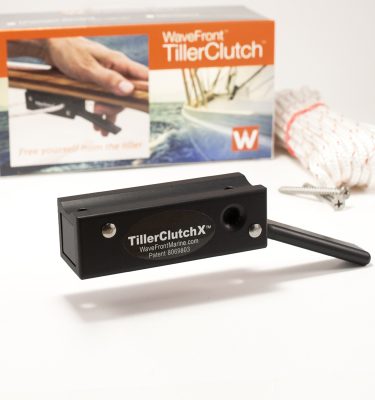
TillerClutch X TM Kit
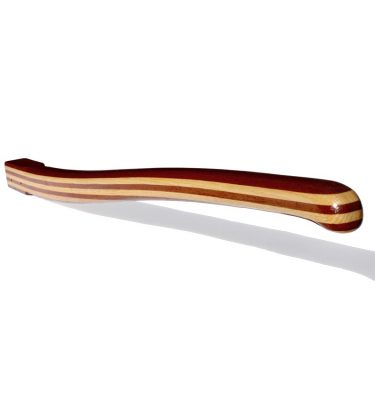
Handcrafted Tillers
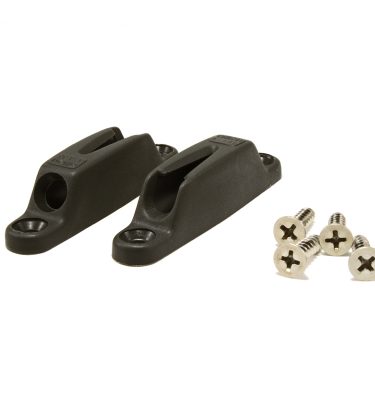
V-Cleats Glass-Filled Nylon (Pair)
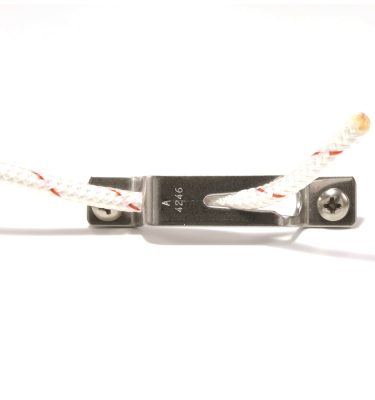
V-Cleats Stainless Steel (Pair)
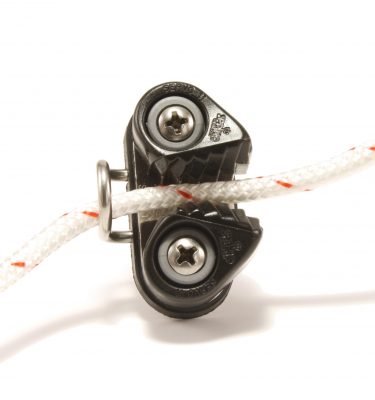
Mini Cam Cleat with Fairlead
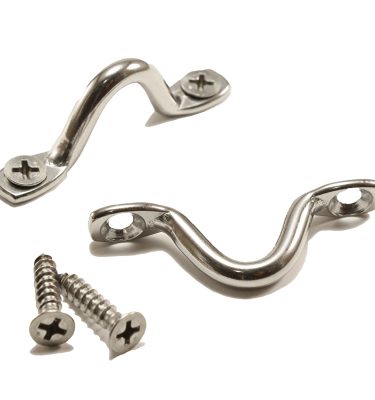
Eye Strap Fairleads (Pair)
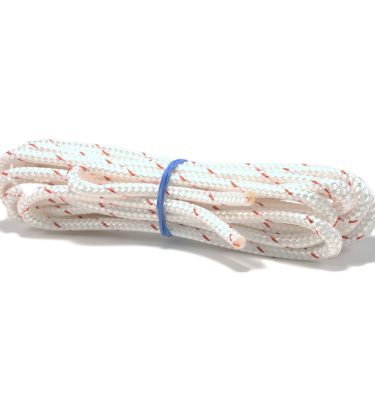
Replacement Control Line
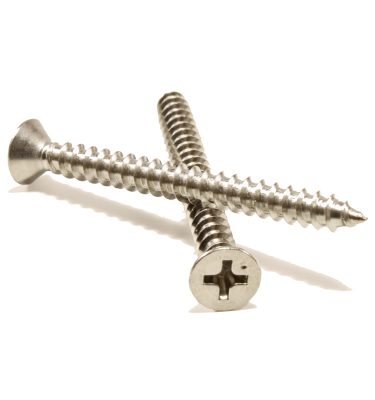
Replacement Mounting Screws (pair)
SHOP ABOUT REVIEWS FAQ’s NEWS RESOURCES CONTACT

WaveFront, Inc. P.O. Box 1632 Pittsboro, NC 27312
© 2024 WaveFront Marine.
- FAQ’s
- WHAT’S NEW
- PRESS COVERAGE
- NEWS RELEASES
- TESTIMONIALS
Tested and Recommended Replacement Control Line Ropes

The TillerClutch and TillerClutchX use 5mm control line rope. This rope must be a firm double-braid with an actual diameter very close to 5mm or slightly smaller. It should run smoothly through the device and be resistant to abrasion. The following ropes have passed our careful testing procedures, and are recommended for TillerClutch use:
- New England Ropes – Sta-Set 3/16 (5mm) Original Control Line
- New England Ropes – Finishline 5mm
- Teufelberger – Sirius 300 XG 5mm
- FSE Robline – Orion 500 5mm
- FSE Robline – Polyester 16 double braid
- FSE Robline – Dinghy Control Line 5mm SK-78 Dyneema core
- Samson – LST Yacht Braid 3/16 45001240
- Novabraid, Canada – XLE Performer traditional tan 3/16″ 5mm double braid
Cutting and Ending a New Control Line Be sure to prepare the ends to fit easily through your TillerClutch: Tightly wrap the line with paper masking tape, cut the rope through the tape with a razor knife, melt the ends with a flame, and then unwrap the ends to make sealed ends that are no larger than the rope itself.
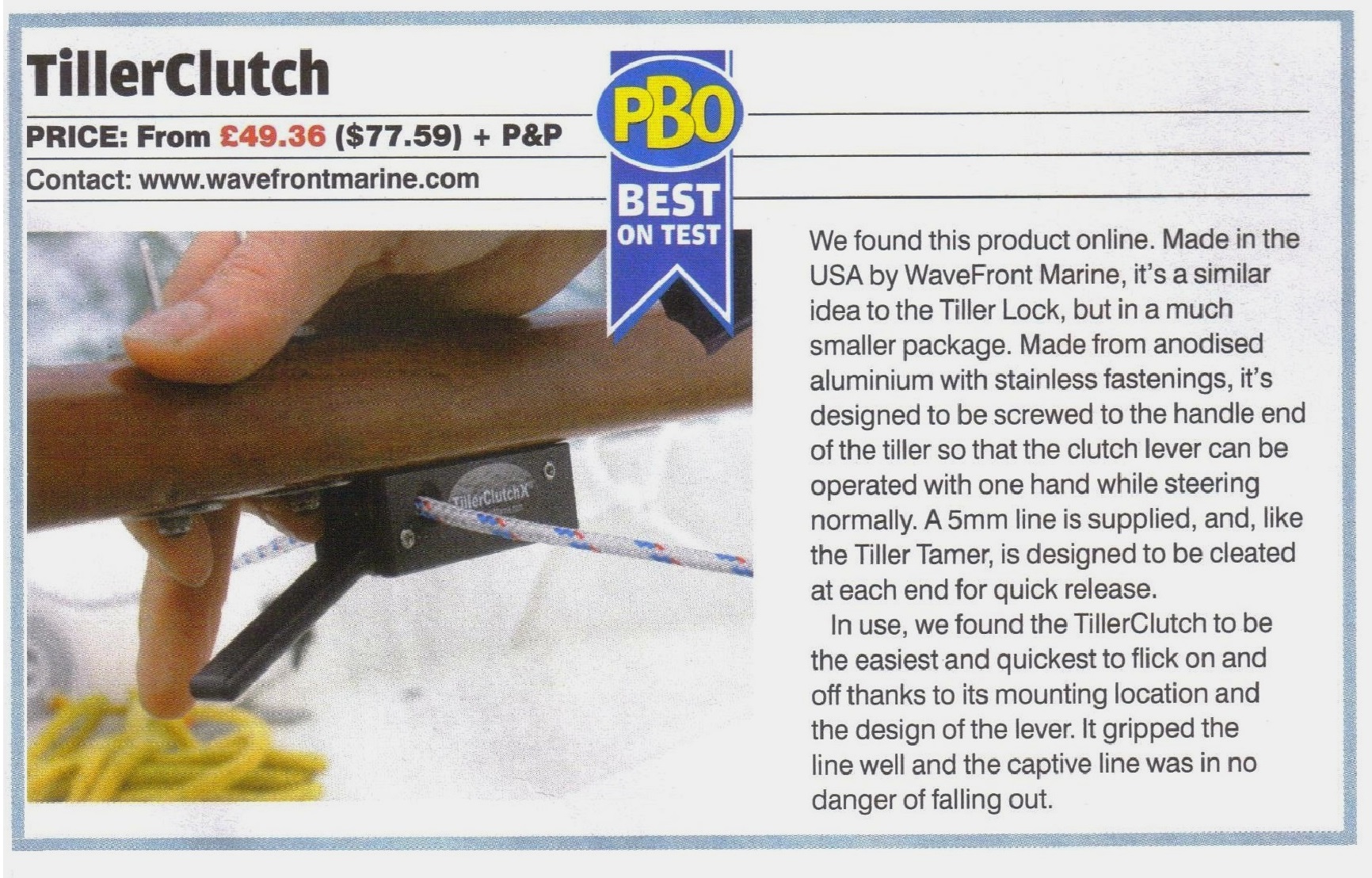
Limited Warranty for the WaveFront TillerClutchTM
WaveFront, Inc. warrants its TillerClutchTM products for the lifetime of the products.
What the Warranty Covers All parts of a TillerClutch are covered by this warranty for workmanship, integrity, durability, and proper functioning of the product.
What the Warranty Does Not Cover This warranty does not cover the tiller or control rope or any other accessories. Nor does it cover any part of a boat or any other property. In no way shall WaveFront, Inc. be liable for any amount exceeding the product’s purchase price.
What We Will Do to Correct Problems You will be responsible for removing and returning the product to us. Upon receiving the product, we will repair or replace a defective product at our discretion and return it to you in good working order at no cost besides that of return postage.
Return Policy Within 60 days of purchase, if for any reason you are unsatisfied, return your product with a copy of your receipt for a full refund to the address found on www.WaveFrontMarine.com.
How You Can Get Service Contact Wavefront, Inc. at [email protected] for assistance with questions or warranty needs.
Who Is Covered This warranty extends to the original purchaser having a receipt as proof of purchase. If you have lost your receipt, contact us and we will determine how to proceed.
Voiding the Warranty Actions that could void the warranty at our discretion include tampering with the product or disassembly, improper use or abuse, and the application of solvents to the self-lubricating synthetic bushings. Normal heavy use is covered by the warranty.
DISCLAIMER Safely steering and piloting a boat is the responsibility of the helmsman, who must be attentive and use caution when leaving the tiller for any reason. Always wear a life jacket while sailing.
Sailors of unballasted boats should use extra caution when securing the tiller with a TillerClutchTM, and should only do so if they are experienced. The tiller should not be secured with any device in potentially dangerous weather conditions.
The more powerful TillerClutchX model is intended only for the strongly-built boats, and should not be used on light-weight portable boats, and unballasted boats.
Wavefront, Inc. and its owners do not under any circumstances assume responsibility for damages to any person or property that may be incurred in connection with the use of its products.
If the purchaser chooses not to abide by this disclaimer, he/she is welcome to return their TillerClutch product to WaveFront, Inc. within 60 days of purchase for a full refund.
The standard TillerClutch is intended for lighter or well-balanced tiller-steered sailboats that typically sail in fair to moderate conditions or sheltered waters. It is recommended for all but the lightest trailer-size sailboats and day sailors generally up to 24 ft (7 m) or so. The steering effort you feel in the tiller is usually under 15 lb (7 kg), about the weight of a bowling ball.
The TillerClutchX is the same physical size, but it provides extra holding power for heavier boats, such as keel boats, stout trailer boats about 25 ft (7 m) and up, traditional cat boats and blue water boats of all sizes. These boats can generate greater steering effort, often above 15 lb (7 kg), and they tend to sail in more varied conditions. Some smaller, stout-built boats with heavy weather helm can also benefit from the TillerClutchX.
The TillerClutchX is not recommended for most smaller, lighter trailer-size boats. It can allow greater loads on the steering components than they are designed to handle. Also, if ever necessary, it takes more effort to overpower the “X” model without first squeezing the lever. Still, unlike using an “autohelm,” you can force the tiller, if necessary, without disengaging the mechanism of either model.
Note, neither model is recommended for ultralight unballasted sailboats like the Sunfish or Laser, which require constant hand steering.
It is simple to upgrade from the standard TillerClutch to the TillerClutchX. The outside dimensions and screw placement are identical.
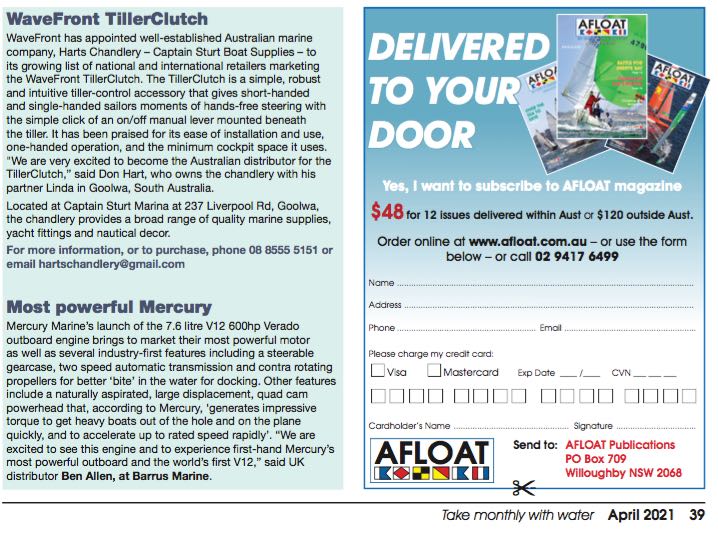
Mounting Servo Mini Cam Cleats
Trim the thin plastic tabs on the bottom of the cam cleats with a utility knife as shown below.
Determine the position of the cam cleats on the boat and mark the screw locations. Pre-drill screw holes in fiberglass with a 1/8” (3.2 mm) bit for the included No. 6 screws. (For other hardware with No. 8 screws, use a 9/64” (3.5 mm) bit.)
Chamfer (flare) the top of the hole just through the overlying gel coat, using a countersink or a much larger drill bit. We recommend running the drill in reverse for this procedure. Use a marine sealer on the screw threads to prevent leaks.
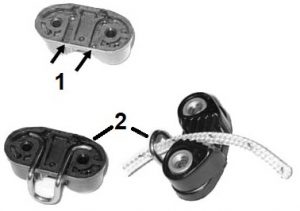
United States
Netherlands

Save up to $4,000 on new electronics
ST1000+ & ST2000+
Self contained, cockpit tiller autopilots for sailboats

You handle the sheets, we'll handle the boat!
Invented by Autohelm in 1973, our tiller pilots have consistently been the world's most popular tiller pilots ever since, setting the standard for performance, reliability, and ease of use.
The ST1000 and ST2000 tiller pilots are self-contained, removable autopilot systems for tiller-steered boats. Inside the durable housing is a powerful electric linear drive, precision fluxgate compass, and an easy-to-use control panel. A quick mounting and connect/disconnect system allows you to transition from hand-steering to autopilot control easily. Built-in SeaTalk networking allows the tiller pilot to communicate with the rest of your networked instruments, wind instrument, and chartplotter.
Convenient AutoTack mode lets you handle the sheets while the pilot tacks the boat, and AutoSeastate intelligently keeps the boat on course while conserving power.
Whether used as a stand-alone autopilot or with SeaTalk/ NMEA GPS, the clear backlit LCD and 6-button keypad make these pilots safe and easy to use.

Recommended Maximum Displacement & Usage
Remember to always take your vessel's fully laden displacement weight into account (often 20% above the designed displacement). The recommended displacements weights are:
Raymarine ST1000: 3,000kg (6,600lbs)
Raymarine ST2000: 4,500kg (10,000lbs)
The tiller drive is designed only for coastal cruising using tiller steered sail boats. It is not intended for offshore passage making.
ST1000+ and ST2000+ Models
Compact, removeable cockpit tiller autopilots for sailing vessels
ST1000+ Tiller autopilot for sail boats

Suitable for boats up to 3,000kg (6,600lbs) maximum displacement.
For 12-Volt DC Systems
SeaTalk and NMEA0183 connections
ST2000+ Tiller autopilot for sail boats
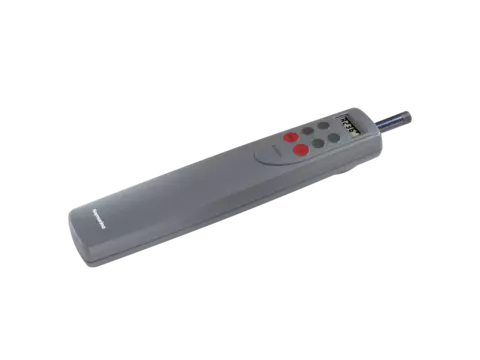
Suitable for boats up to 4,500kg (10,000lbs) maximum displacement.
× You are using an outdated browser. Please upgrade your browser to improve your experience.
We Ship Worldwide! | FREE SHIPPING! for US Continental orders over $99. Click for details.

Shopping Cart
Your cart is currently empty..
FREE SHIPPING! for US Continental orders over $99 click for details
Sailboat Tiller Extensions

Keep control of the boat in your reach no matter where you are with the top extensions from your preferred brand. Tiller extensions are sold in varying sizes to extend your usable reach to where you operate. Telescoping extensions are also available for size adjustments on the fly. Technical assistance is available to help find the right size.
MAURIPRO Sailing, your direct access to Sailboat Tiller Extensions and all your other sailing and boating needs.
Copyright © 2024 MAURIPRO Sailing LLC.

Please verify you are a human
Access to this page has been denied because we believe you are using automation tools to browse the website.
This may happen as a result of the following:
- Javascript is disabled or blocked by an extension (ad blockers for example)
- Your browser does not support cookies
Please make sure that Javascript and cookies are enabled on your browser and that you are not blocking them from loading.
Reference ID: 06e012f5-ef86-11ee-ab23-7d1f78172d35
Powered by PerimeterX , Inc.

COMMENTS
Welcome Sailors! THIS IS THE HOME OF WOOD SAILBOAT TILLERS. WE OFFER QUALITY TILLERS FOR MANY BOAT MODELS SUCH AS CATALINA, HUNTER, J-BOAT, PEARSON, AND MORE. CUSTOM TILLERS ARE ALSO AVAILABLE. OUR TILLERS ARE BEING USED AROUND THE WORLD BY ALL TYPES OF SAILING ENTHUSIASTS INCLUDING DAY SAILORS, LONG TRIP CRUISERS, AND COMPETITIVE RACERS.
At Rudder Craft we build every sailboat rudder with the singular focus of improving your sailboat's steering performance. In order to accomplish this our sailboat rudders incorporate a hydrofoil design, as a matter of course. Sailboats ranging from the West Wight Potter 15, all the way up to the MacGregor 36 and Catalina 42, will find a more ...
The sailboat tiller is like a captain's rudder, steering you towards new horizons and adventures. This essential piece of equipment controls the movement of your sailboat and allows you to navigate through the water with confidence. But fear not! Using a sailboat tiller is simpler than tying a sailor's knot. Step 1: Feel the Tiller in Your ...
Add timeless beauty and refined steering to your sailboat with a handcrafted, laminated tiller now offered as the perfect companion to WaveFront's flagship tiller-steering device, the TillerClutch. Our tillers come with a three-year limited warranty and are built from the best hardwoods for proven strength and durability. The laminated strips ...
The tiller is a lever that you use to turn the rudder to steer a boat. On many power and sailboats, the rudder (s) are out of sight beneath the hull. For this type of design, the tiller is fitted to a post. The post is attached to the rudder, and it is fitted under the boat. When steering with a tiller, it is moved opposite of the direction you ...
In part eighteen of this series on how to build a wooden Snipe class sailboat I show how to make a tiller and tiller extension for the rudder. I mill the rou...
A tiller system is the method by which sailors control the direction of their boats. It consists of a long wooden or metal bar connected to the rudder at one end and operated by hand at the other end. When a sailor turns the tiller in either direction, it moves the rudder accordingly, causing the boat to change course.
Rudder Craft Varnished Sailboat Tiller - Stock 'F' Tiller $191.99. 0. Schaefer Midshipman II Tiller Lock - 19.27 $153.99. 0. Ronstan Tiller Extension - 41" - RF3130 $62.97. 0. Rudder Craft Varnished Sailboat Tiller - Stock 'E' Tiller $191.99. 0. Harken Universal Joint Tiller Extension - 7102 ...
1-45 results of 64. Professionals and enthusiasts get their sailboat tillers and rudder hardware from Fisheries Supply. Browse products from top brands like Schaefer Marine, Forespar, and more.
Opti Tiller Extension (Standard) Optiparts. $45.95. 1. 2. Sailing Tiller Extensions - Ronstan Battlesticks, Harken Aluminum tillers, Acme Black Diamond, Fatso Carbon tillers and more. Tillers from 30" to 54" in aluminum and carbon fiber. Free Shipping.
The feel on the tiller extension is your direct link to the boat's performance, so how you hold it is more important than you might think. By Mike Ingham. May 31, 2022. More: Sailing How To.
World-class laminated tiller for your sailboat. Rudder Craft tillers are built in-house from top quality wood selected for its strength and beauty. Eight strips of laminated African mahogany and white ash are glued in Rudder Craft's proprietary molds to produce tillers for specific boat models. The butt end dimensions are 2" H x 1 1/2" W.
Our tillers are built in-house from top quality wood selected for its strength and beauty. Eight strips of laminated African mahogany and white ash are glued in our proprietary molds to produce tillers for specific boat models. Each tiller is coated with a marine grade spar varnish. The butt end dimensions are 2"H X 1 1/2"W.
(Best for Tiller-steered Sailboats) The Raymarine ST100 Plus Tiller Pilot is a classic tiller pilot that's one of the best accessories for your sailboat and your everyday sailing escapades. It's designed in such a way that it can accept NMEA data while still offering accurate navigation thanks to its incredibly intelligent software.
Sailboat Tiller Steering & Accessories. A Tiller is a pole that acts as a lever to steer a boat by controlling the rudder. Dinghies and Sportboats use a Tiller Extension in addition to the tiller for better control, while Small Cruising boats are controlled directly by the tiller. All parts and accessories for tiller steering are available.
Because manufacturers often changed tiller and/or rudder specifications mid-production and boat owners repair or replace tillers and rudders over the life of the boat, a new tiller may not simply bolt on. Most of our tillers have butt end measurements of 2"H x 1 1/2"W. Compare the butt dimensions of our tillers with your existing tiller before ...
It is connected to the helm or tiller. Tiller or Helm. The helm is simply the nautical term for the wheel. The tiller is simply the nautical term for the steering stick. The tiller or helm is attached to the rudder and is used to steer the boat. Most smaller sailboats (below 30') have a tiller, most larger sailboats use a helm.
World-class laminated tiller for your sailboat. Our tillers are built in-house from top quality wood selected for its strength and beauty. Eight strips of laminated African mahogany and white ash are glued in our proprietary molds to produce tillers for specific boat models. The butt end dimensions are 2"H X 1 1/2"W.
Description. The standard TillerClutch is intended for lighter or well-balanced tiller-steered sailboats that typically sail in fair to moderate conditions or sheltered waters. It is recommended for all but the lightest trailer-size sailboats and day sailors generally up to 24 (7 m) or so. The steering effort you feel in the tiller is usually ...
The standard TillerClutch is intended for lighter or well-balanced tiller-steered sailboats that typically sail in fair to moderate conditions or sheltered waters. It is recommended for all but the lightest trailer-size sailboats and day sailors generally up to 24 ft (7 m) or so. The steering effort you feel in the tiller is usually under 15 lb (7 kg), about the weight of a bowling ball.
The ST1000 and ST2000 tiller pilots are self-contained, removable autopilot systems for tiller-steered boats. Inside the durable housing is a powerful electric linear drive, precision fluxgate compass, and an easy-to-use control panel. A quick mounting and connect/disconnect system allows you to transition from hand-steering to autopilot ...
Tiller extensions are sold in varying sizes to extend your usable reach to where you operate. Telescoping extensions are also available for size adjustments on the fly. Technical assistance is available to help find the right size. Shop sailboat Tiller Extensions at MAURIPRO Sailing Store. Complete selection and technical information on all.
Gray Retaining Clip for Spinlock Tiller Extensions. $10.99. 5.0. Compare. 1 - 24 of 26 Items. Load More. Shop the best selection of Tillers & Tillers Extensions from West Marine. Visit for products, prices, deals and more!